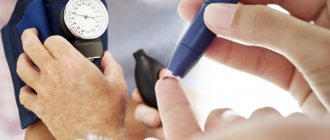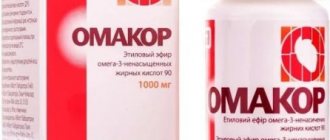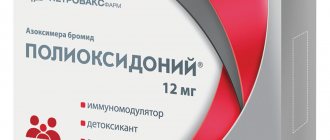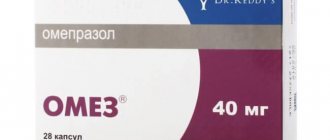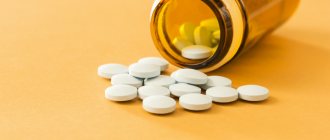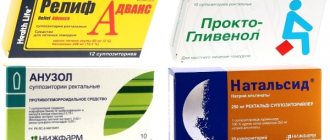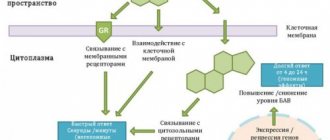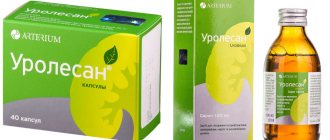Xarelto is an anticoagulant drug used to prevent the formation of blood clots in blood vessels and prevent myocardial infarction. The medicine is expensive, so if necessary, it can be replaced with a cheaper and no less effective analogue.
pharmachologic effect
Manufacturer: BAYER (Germany)
Release form: tablets
Active ingredient: rivaroxaban
Analogs: Apixaban, Enoxaparin, Warfarin
Rivaroxaban is an anticoagulant of direct inhibitors of blood clotting factor Xa, that is, the mechanism of action of the drug is based on stopping the formation of blood clots. The medication contains micronized Rivaroxaban 15 mg, 20 mg and 10 mg. After ingestion, it is quickly and almost completely absorbed into the blood, reaching its highest concentration within 2–3 hours.
Pharmacological features of Xarelto
Xarelto is a pharmacological drug from the group of direct-acting anticoagulants. The main active ingredient is rivaroxaban. This component ensures the rapid therapeutic effect of the drug and its high bioavailability.
Main indications for taking Xarelto:
- atrial fibrillation;
- phlebeurysm;
- thromboembolism;
- arterial thrombosis;
- prevention of stroke and myocardial infarction.
The drug is recommended to be taken after surgical interventions on the legs to prevent the development of thromboembolism.
Xarelto has a wide range of contraindications - traumatic brain injury, cancer, a history of hemorrhagic stroke, stomach ulcer or arterial aneurysm. It should not be taken for open bleeding, severe kidney or liver diseases.
Also, the drug is prohibited for use before reaching 18 years of age, during pregnancy and breastfeeding, as well as in case of allergic intolerance to rivaroxaban.
Xarelto may cause side effects such as headaches and dizziness, anemia, low blood pressure, tachycardia, bleeding in the eye or nosebleeds. Possible side effects include nausea, vomiting, stool upset, and abdominal pain.
Indications for use of Rivaroxaban
The medication is prescribed for the following diseases and conditions:
- deep vein thrombosis of the lower extremities;
- pulmonary embolism;
- to prevent cerebrovascular accidents in cardiac patients (atrial fibrillation of non-valvular origin);
- for prophylactic purposes after orthopedic and surgical interventions, to prevent the development of thromboembolism.
The drug is well tolerated by patients, characterized by its effectiveness and speed of action.
Rivaroxaban analogs
Not always a medication can be included in the complex treatment of a particular disease. Substitutes for Rivaroxaban, which are presented in the pharmacy chain in the form of:
- generics;
- synonyms;
- combination drugs with a similar effect.
Rivaroxaban analogues and drug substitutes allow the doctor to select the appropriate medicine to treat the patient and avoid complications of the disease.
Table of Rivaroxaban analogues with price and country of origin
| Analogue | Price | Manufacturer country |
| Apixaban | 2600-3200 | USA |
| Enoxaparin | 1400-4000 | Russia |
| Warfarin | 120-180 | Russia |
| Pradaxa | 1800-4000 | Germany |
| Fraxiparine | 4200-4500 | Ireland |
| Sinkumar | 3600-4000 | Germany |
| Clexane | 2834-3000 | France |
A wide range of such drugs allows you to choose not only imported medicines, but also Russian analogues of Rivaroxaban.
Eliquis
Manufacturer: PFIZER (USA)
Release form: tablets
Active ingredient: apixaban
The Rivaroxaban analogue is a direct-acting anticoagulant that affects blood clotting. The mechanism of action of Eliquis is aimed at preventing the formation of blood clots. The drug is used:
- in orthopedic practice after complex operations as a prophylactic agent to prevent the formation of blood clots;
- for the prevention of strokes and pulmonary embolism;
- aged patients suffering from diabetes, arterial hypertension or a number of cardiac diseases.
The Eliquis analogue is prescribed, 1 tablet 2 times a day. The duration of the course of therapy depends on the type of disease and is determined only by the doctor.
Enoxaparin
Manufacturer: BIOCAD (Russia)
Release form: injection solution
Active ingredient: enoxaparin sodium
Enoxaparin is part of the pharmacological group of anticoagulants and is used as a means to prevent the formation of blood clots. This analogue of Rivaroxaban 10 mg is especially in demand in surgical and orthopedic practice.
The drug is administered by subcutaneous injection, the dosage of which is calculated individually.
Warfarin
Manufacturer: OZONE (Russia)
Release form: tablets
Active ingredient: warfarin
The Rivaroxaban analogue Warfarin is an indirect anticoagulant. The medication can be used as a single agent for the prevention of thrombosis of various origins and be part of complex therapy for the treatment of atrial fibrillation.
The drug is prescribed in a dosage of 2.5 mg (1 tablet) 1 time per day. In the future, the dose and frequency of administration of the analogue can be adjusted depending on the type of disease.
Pradaxa
Manufacturer: BOEHRINGER INGELHEIM (Germany)
Release form: capsules
Active ingredient: dabigatran etexilate
Pradaxa is a drug that is part of the pharmacological group of direct thrombin inhibitors. The active substance inhibits the action of the enzyme thrombin. This process leads to a decrease in the prothrombin index in the blood plasma. The result of these biochemical reactions of the Rivaroxaban analogue is a slowdown in the intensity of blood clot formation.
The drug is taken 1 capsule 1-2 times a day. It is possible to adjust the dose depending on the activity of the pathological process.
Fraxiparine
Manufacturer: ASPEN PHARMA (Ireland)
Release form: solution for subcutaneous administration
Active ingredient: nadroparin calcium
The Rivaroxaban analogue is a direct-acting anticoagulant. Fraxiparin is a low molecular weight heparin synthesized from standard heparin. It is used to prevent complications (thromboembolism) after surgical and orthopedic interventions.
The analogue is indicated for critically ill therapeutic and intensive care patients on bed rest. The dosage of drug administration is calculated individually, taking into account the severity and type of disease.
Sinkumar
Manufacturer: MEDA PHARMA (Germany)
Release form: tablets
Active ingredient: acenocoumarol
Sinkumar is an indirect anticoagulant and vitamin K antagonist. The maximum decrease in prothrombin occurs 1–2 days after starting to use the analogue. It is used as a prophylactic agent to prevent embolism and thrombosis of various origins. The dosage and treatment regimen are determined by the doctor based on blood clotting indicators.
Clexane
Manufacturer: SANOFI-AVENTIS (France)
Release form: injection solution
Active ingredient: enoxaparin sodium
The drug is part of the pharmacological group of direct-acting anticoagulants and is a low-molecular-weight heparin. Clexane is used as a therapeutic and prophylactic agent:
- with deep vein thrombosis;
- cardiological pathology (coronary artery disease, myocardial infarction without the presence of a Q wave on the ECG);
- during surgical interventions;
- with prolonged bed rest.
Rivaroxaban analogue 20 mg is used subcutaneously in a dosage determined by the doctor according to indications, depending on the pathological process.
Thrombo ACC and analogues. What to look for when choosing acetylsalicylic acid?
There are many drugs of acetylsalicylic acid (ASA), or aspirin, used in cardiology and neurology. You probably have questions: “Which is better?”, “What to choose?”. Let's discuss the main differences between the drug Thrombo ACC and some other ASA drugs.
The effectiveness of which ASA drugs has been most studied?
Acetylsalicylic acid is one of the most studied drugs. The use of ASA reduces the risk of myocardial infarction by 34%, stroke by 25%, and death from vascular causes by 15% [1]! At the same time, the most impressive results are shown for enteric-coated forms (Trombo ACC refers specifically to such forms). Other “improved” forms of aspirin, including those combined with magnesium hydroxide (such drugs include Cardiomagnyl, Magnicor, etc.), have a much smaller evidence base [2].
Which ASA drugs have demonstrated better tolerability?
The main side effects of ASA relate to the gastrointestinal tract: the formation of erosions, ulcers, bleeding. This contributed to the development of “improved” forms of aspirin: enteric-coated, containing so-called antacids (magnesium hydroxide), etc. The presence of an enteric coating allows the drug to dissolve in the intestines, bypassing the stomach. The most convincing evidence of a more gentle effect on the gastric mucosa was obtained specifically for enteric-coated forms. Thus, with long-term use of such forms of ASA, the incidence of gastric erosions is 1.5 times less than when taking regular aspirin [2]. In contrast, antacid formulations of ASA have not demonstrated any benefit over conventional aspirin formulations [3].
What dosage of aspirin is considered most appropriate for long-term preventive use?
The doctor determines the appropriate dosage of ASA and the duration of treatment for each patient. Studies have proven that the administration of low doses of ASA (75–150 mg/day) for long-term therapy is accompanied by the highest effect. This reduces the risk of developing adverse events from the gastrointestinal tract [2]. Thrombo ACC is available in dosages of 50 and 100 mg.
Price
Both according to pharmacoeconomic analysis [5] and when comparing pharmacy prices [6, 7], Thrombo ACC is several times more profitable than another enteric-coated ASA drug, Aspirin-Cardio.
Thus, Thrombo ACC:
- is available in the form of enteric-coated tablets - this form is the most studied and also has better tolerability with long-term use;
- Available in two dosages - 50 and 100 mg in packages of 28 and 100 tablets;
- based on a monthly course, it is several times cheaper than another enteric-coated ASA drug (Aspirin-Cardio) [5-7].
Before taking any medicine, you should consult your doctor and familiarize yourself with the contraindications specified in the instructions for medical use.
Used sources:
(1) Antithrombotic Trialists' Collaboration, Collaborative meta-analysis of randomized trials of antiplatelet therapy for prevention of death, myocardial infarction, and stroke in high-risk patients BMJ, 2002. 324(7330): p. 71-86.
(2) Rafalsky V.V., Krikova A.V. Clinical pharmacology of acetylsalicylic acid and features of dosage forms are the key to effective and safe use for the prevention of thrombosis. Medical advice. 2016;(5):26-33
(3) Garcia Rodriguez, LA, S. Hernandez-Diaz, FJ de Abajo, Association between aspirin and upper gastrointestinal complications: systematic review of epidemiologic studies. Br J Clin Pharmacol 2001. 52: p. 563-71.
(4) Lotrionte, M., L. M. Biasucci, M. Peruzzi, G. Frati, A. Giordano, G. Biondi-Zoccai, Which Aspirin Dose and Preparation Is Best for the Long-Term Prevention of Cardiovascular Disease and Cancer? Evidence From a Systematic Review and Network Meta-Analysis. Progress in cardiovascular diseases, 2016. 58(5): p. 495-504.
(5) Makarova, E.I., G.A. Tolordava, E.E. Arinina, Pharmacoeconomic analysis of the drug Thrombo ACC in the treatment of patients with previous cardiovascular events. Pharmacoeconomics: Theory and Practice, 2015. 3(4): p. 69-74.
(6) . Thrombo Ass Tablets 100 mg No. 100, 43.00 rub. minimum, only 424 sentences:. 2016; Available from: (access date 07/31/2016).
(7) .
Aspirin Cardio Tablets 100 mg No. 20, 120.00 rub. minimum, only 11 sentence:. 2016; Available from: (access date 07/31/2016). RUS-GPS-THR-NON-10-2016-183
